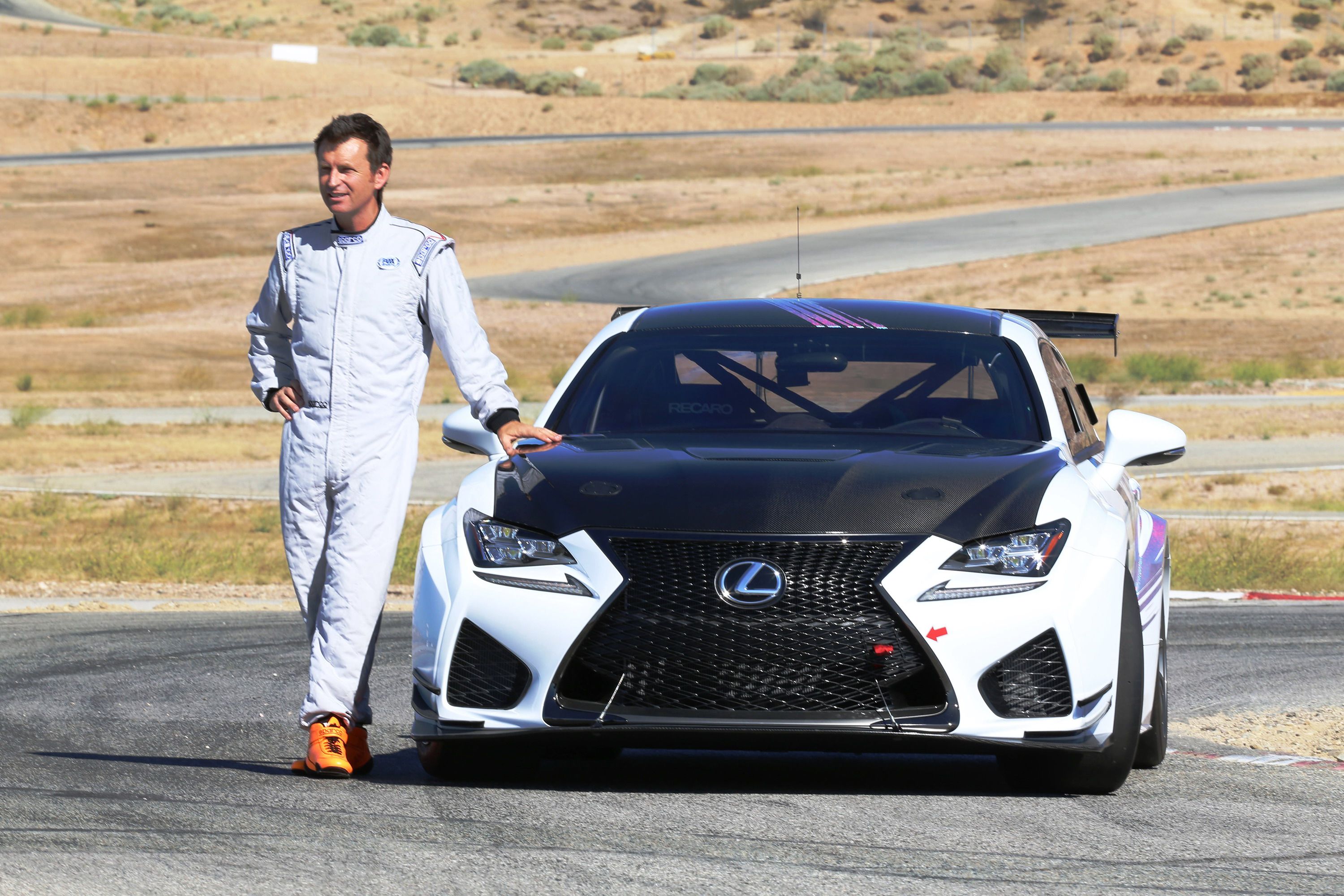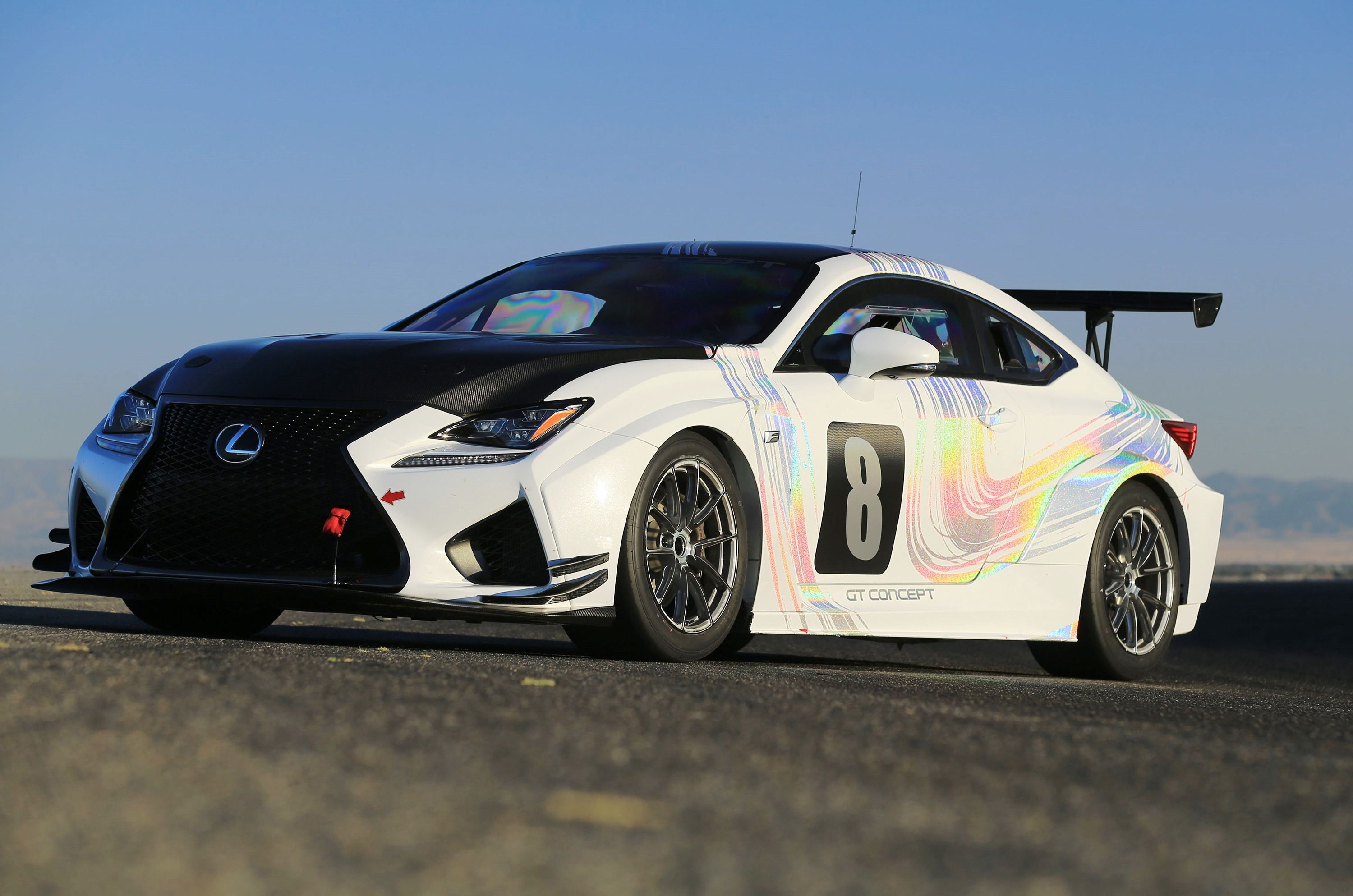The 2015 Lexus RC F is a gorgeous and menacing looking coupe.->ke141 The only way Lexus->ke47 could improve its appearance would be by giving it a a proper racing->ke447 body kit. Fortunately, the Japanese already did that by creating GT3 and GT500 versions of the high-performance coupe. Now, Lexus has unveiled yet another motorsport version of the coupe, this time around specifically built for the Pikes Peak International Hillclimb.->ke1001
Granted, it might not be as aerodynamic as the 2015 Lexus RC F GT3 and it doesn't have the massive wing of the 2014 Lexus RC F GT500, but the GT Concept shown here is one hot RC F.->ke4714
Lexus says the new race car->ke148 builds upon the legacy of the 2012 Lexus IS F CCS-R that competed at Pikes Peak in 2012 and 2013. Hopefully, the RF C GT Concept will manage a better performance than the sedan->ke142 did in 2013, when it climbed the hill in a disappointing 12-minute run. The same car ran a 10:30.850 time the previous year.
To be driven up the mountain by Justin Bell, son of racing legend Derek Bell and GT2 class Le Mans->ke1591 winner in 1998, the RC F GT Concept will allow Lexus engineers to experiment with "different tuning ideas, settings and software" for future production use.
"Competition efforts like Pikes Peak help nurture a performance engineering culture and ideology that will have the greatest influence of future F brand products," said Jeff Bracken, Vice President and General Manager of Lexus.
Continue reading for the full story.
Lighter Body, Enhanced Aerodynamics
From the outside, the GT Concept looks like the GT3's milder brother. The body kit is less aggressive, employing a significantly smaller front splitter and shorter side skirts. Additionally, the fenders are closer to the production car's, especially at the rear wheels.
Unlike any other race version of the RC F, the Pikes Peak car features a pair of canards on each side of the front fender. There's a new diffuser and a rear wing design, both of which are less imposing than the GT500's. Although the wing sits as high as the one on its more aggressive brethren, it's thinner and shaped for a different setup.
Moving over to what's less noticeable, the car weighs about 800 pounds less than the street version. Lexus managed to ditch about 20 percent of the road car's weight by using a high degree of composite materials, including carbon-fiber and carbon-fiber-reinforced plastic. The engine hood, the roof and the aerodynamic kit appears to be made from these lightweight materials. The no-nonsense interior stripped of everything unnecessary in a race contributed to this drastic diet as well.
The RC F GT Concept will compete in the Time Attack class, where it will face competition from modified versions of the Ford Mustang,->ke428 Subaru WRX,->ke4657 BMW M3,->ke2366 Jaguar F-Type,->ke1224 and Nissan GT-R,->ke1592 among many others.
The 93rd running of the Pikes Peak International Hillclimb will take place on June 28th.
Why it matters
Having already used the IS F CCS-R race car to develop key components such as the engine and transmission for the RC F street car, projects such as the GT Concept might prove to be very important for future F-badged products. Also, because both the engine and the transmission remained unchanged from the production car -- though in different states of tune -- Pikes Peak will be an important test not only for the newly developed race car, but for the road-going version as well. And who knows, maybe Lexus will use this test to forge a more hardcore variant of the RC F, one that would give the brand the track-focused compact all premium automakers need these days.
2015 Lexus RC F GT3 Concept
Find out more about the RC F GT3 Concept here.


